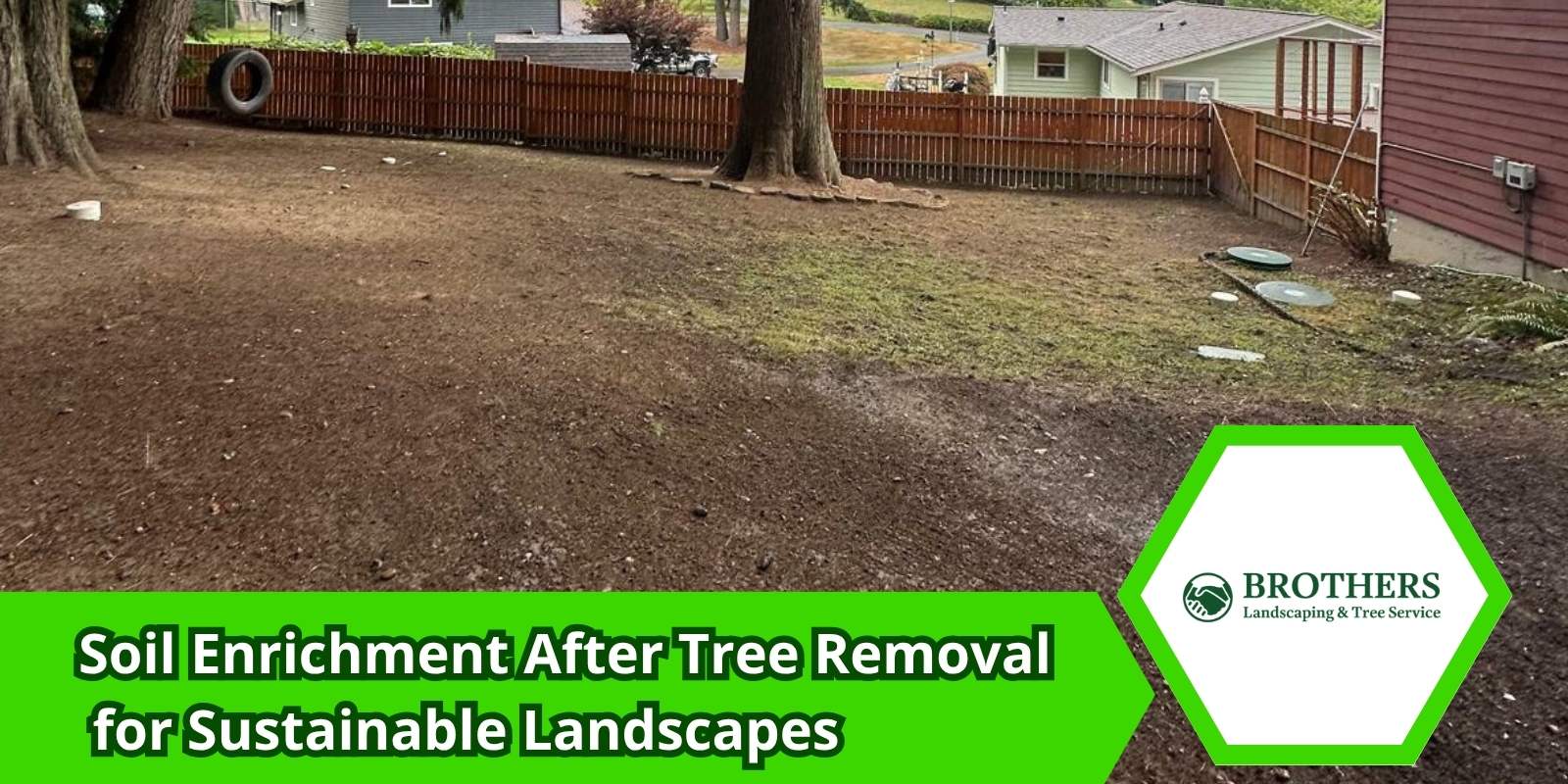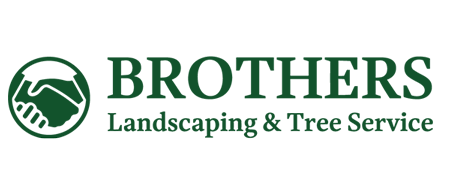
After removing a tree, you might be left with more than an empty space—your soil could be compacted, stripped of nutrients, or riddled with decaying roots. That’s why soil enrichment after tree removal is an essential step in restoring your yard’s health.
At Brothers Tree Service & Landscaping, we focus on eco-friendly tree removal techniques that leave your soil in better shape, not worse. Whether you’re planning to replant or start fresh, enriching the soil ensures your next landscape thrives.
Why Soil Needs Attention After a Tree Is Removed
Tree removal can disturb the balance of your soil. Roots may leave voids or compact the ground, while heavy equipment can disrupt drainage and reduce oxygen. Nutrient depletion is also common, especially if the tree was mature and deeply rooted.
Ignoring this step can lead to poor plant growth, erosion, or water pooling. Instead, enriching the soil helps rebuild its structure, encourages microbial activity, and creates a strong foundation for future landscaping.
For a smooth transition post-removal, explore our guide on landscaping after tree removal.
Natural Techniques for Soil Recovery and Enrichment
We take a sustainable approach to soil care by using organic materials and low-impact methods. These include adding compost, mulching with tree chips, and promoting natural decomposition. When done right, these methods turn a disturbed area into a fertile, balanced planting zone.
Our process supports sustainable landscaping practices that enhance soil without relying on chemicals or unnecessary excavation.
Best Soil Enrichment Methods After Tree Removal
Here are eco-conscious techniques we recommend to improve soil health after tree removal:
- Spread compost or aged manure over the area to restore nutrients
- Apply mulch or wood chips to regulate moisture and prevent erosion
- Aerate the soil manually to loosen compaction without disturbing roots
- Use cover crops like clover to fix nitrogen and improve soil structure
- Allow remaining roots to decompose naturally and feed soil microbes
These techniques improve your soil while aligning with long-term, low-maintenance goals.
Supporting Healthy Soil in Low-Maintenance Yards
Enriched soil leads to stronger plants, better drainage, and less need for fertilizers or pesticides—all essential for a low-maintenance yard. Many homeowners in Mason County are opting for native plants and drought-tolerant designs that benefit from healthy, living soil.
See how these practices fit into broader low-maintenance yard designs that look great and require less work.
FAQs About Soil Enrichment After Tree Removal
What should I add to the soil after removing a tree?
Organic compost, mulch, and cover crops are ideal for restoring nutrients and rebuilding soil structure.
How long should I wait before replanting?
It depends on the tree size and soil condition. For most yards, enriching the soil and waiting a few weeks allows for healthier replanting.
Can I reuse the tree debris as mulch?
Yes! Using chipped branches and leaves is one of the best eco-friendly ways to enrich the soil naturally.
Restore Your Soil with Brothers Tree Service
Don’t leave your yard bare after tree removal. At Brothers Tree Service & Landscaping, we offer soil enrichment after tree removal services to help you rebuild your landscape from the ground up—naturally and sustainably.
For more inspiration, visit our landscaping trends for Mason County yards or contact us for a personalized soil recovery plan.
